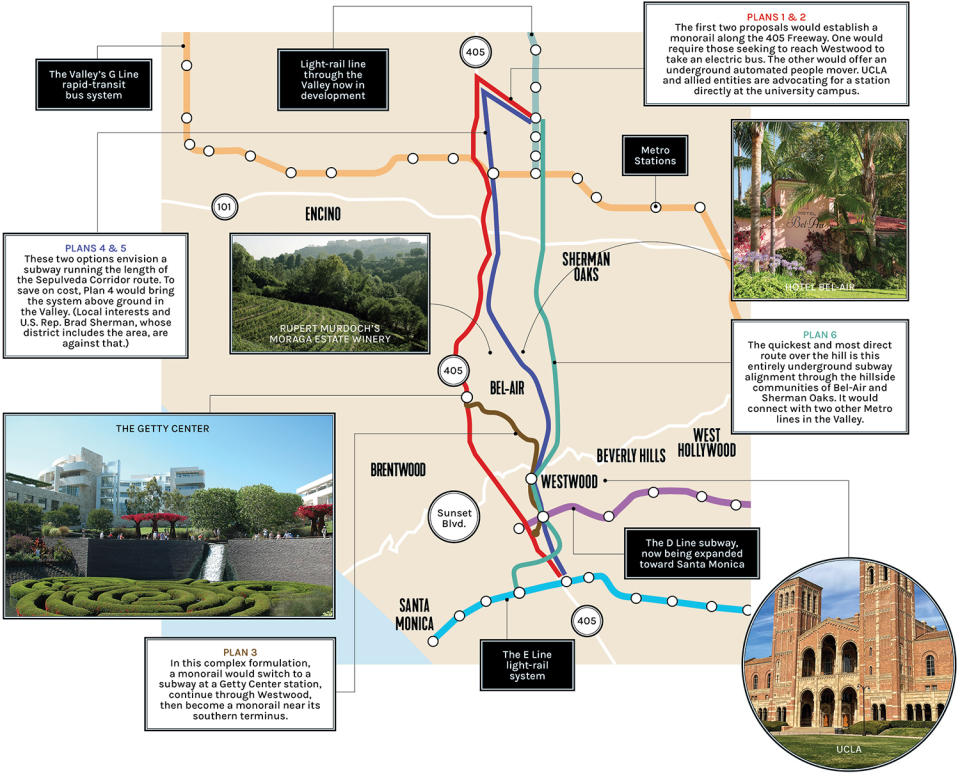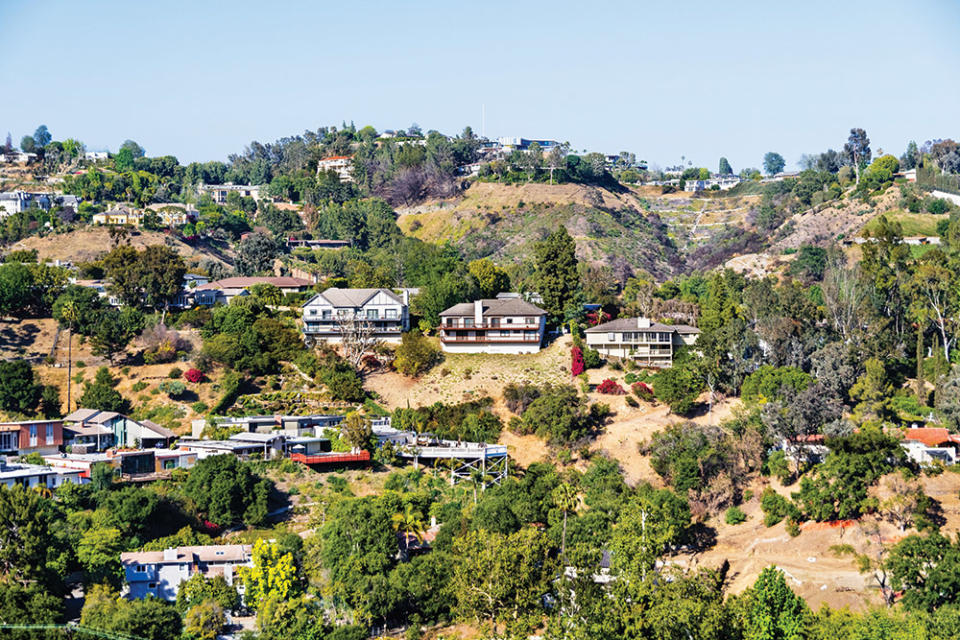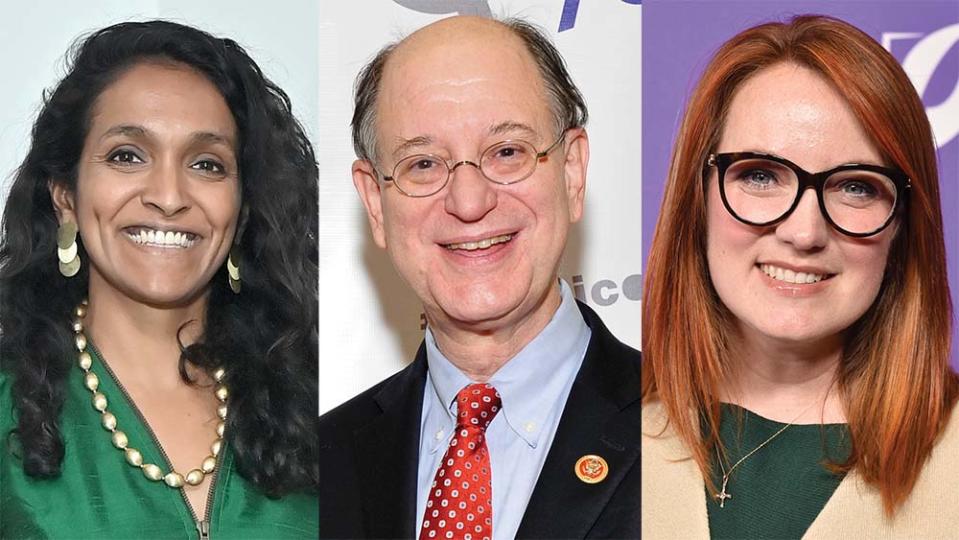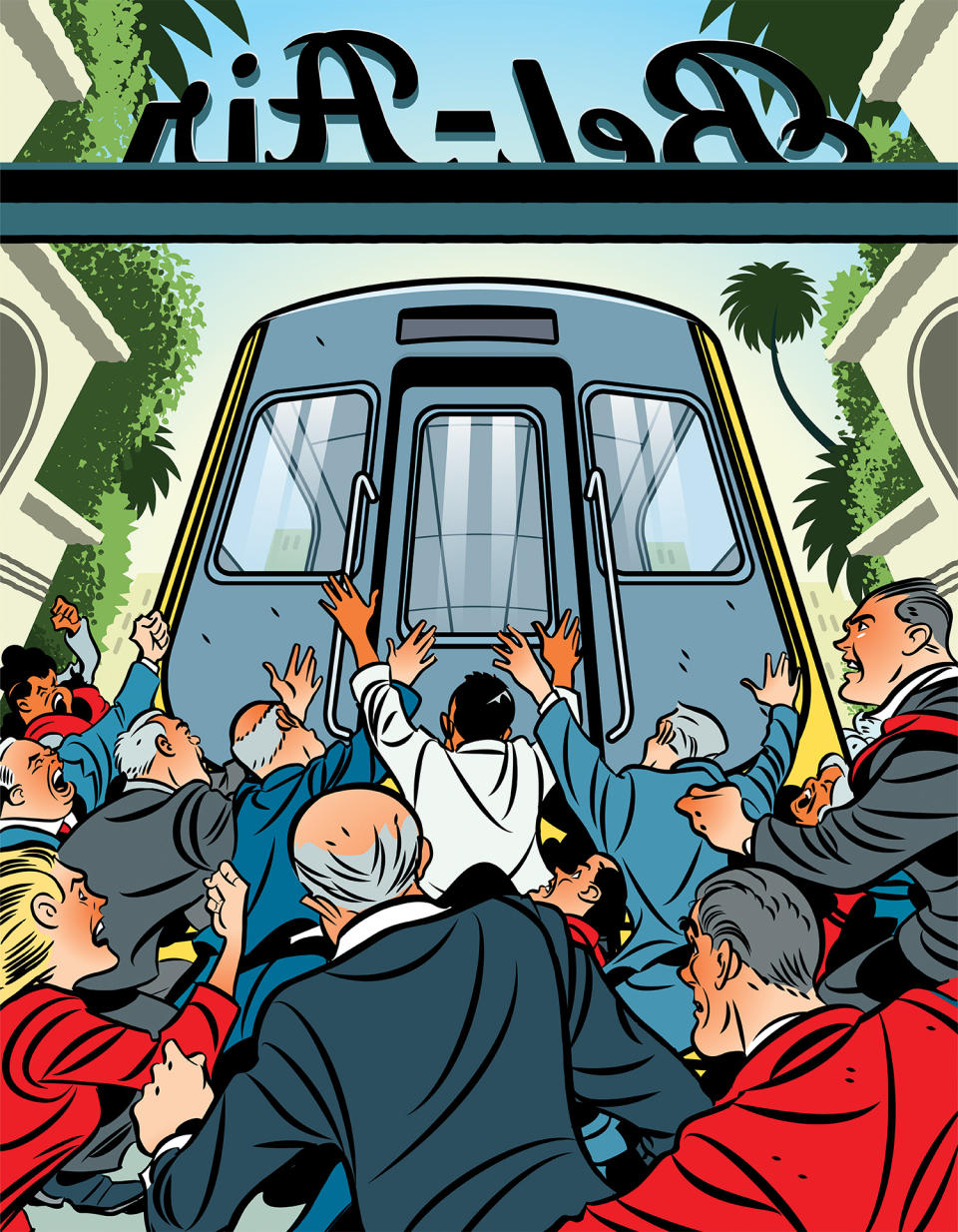Train Wreck? A Mogul’s Battle Against The Bel-Air Subway
- Oops!Something went wrong.Please try again later.

Fred Rosen doesn’t mind if people consider him a villain. He made that clear during his fortune-making run at Ticketmaster, which he turned into a polarizing behemoth. “I was running ‘the evil empire’? I was running a business. You know who liked me? My clients. Did I love being called an asshole? Not particularly. Could I live with it? Sure.” He adds, “You can’t build a business without pissing somebody off.”
The same attitude prevails in his current venture: attempting to kill a proposed subway through his Bel-Air neighborhood. “You have to come to grips with the fact that not everyone’s going to like you,” he says.
More from The Hollywood Reporter
Rosen, an 80-year-old grandfather, is aware of his pugnacious intensity. “Guys like me make coffee nervous,” he jokes during lunch in a booth at his “commissary,” the Hotel Bel-Air’s restaurant. (Rosen did stand-up in the Catskills as a teenager.) Now his ire is directed at L.A. County’s transit authority, known as Metro, which he derides as “moribund, brain-dead, inept.”
The agency has developed six route plans for what it has dubbed the Sepulveda Transit Corridor. It’s a north-south rail system estimated to cost in the untold billions and set to open in a decade or two. Boosters hope it will get underway in the next couple of years. The goal is to alleviate traffic by connecting the San Fernando Valley’s G Line bus route with the Westside’s now-expanding D Line subway and its completed E Line light-rail system.
Half of these proposals call for a monorail along the 405 Freeway. The rest would require tunneling beneath one of the city’s wealthiest enclaves. Residents worry the colossal project will yield noise issues and disrupt traffic during construction, then emit vibrations during operation — all of which Metro dismisses. (There wouldn’t be a transit station in Bel-Air itself.) To stop a subway, or at least significantly stall it, making it less desirable to decision-makers, Rosen is spearheading a threatened lawsuit through a community group, Keep Bel-Air Beautiful.
Many of his neighbors back him. “Fred — who I now call ‘Fearless Fred’ — is leading this battle for us,” explains studio chief turned philanthropist Sherry Lansing. “It’s an important one.” Adds financier and Hello Sunshine founder Seth Rodsky: “He’s got the support of the community, which he cares passionately about. It’s good to have Fred on our side.”

Rosen’s revolt pits a powerful coterie of Angelenos (who grant they’re unlikely to commute on the proposed transit system) against an array of politicians, bureaucrats and activists who aren’t blanching, at least for now, at the legal threat. “Large projects end up facing litigation,” says L.A. City Councilmember Nithya Raman, the former Time’s Up Entertainment executive director and urban planner whose district includes parts of the Sepulveda Pass and surrounding areas. She supports a subway. “This corridor sees some of the highest volumes of travel in the entire country, so it has the potential to be one of the most transformative transportation projects in the history of the city. If we focus on getting this right, on the speed and the reliability of the service and the ease of the [station] connections — and not what caters to the needs of people who don’t use the project — we can bring a lot of people onto this new route.”
Metro declined to speak about Keep Bel-Air Beautiful’s possible litigation. Its deputy CEO, Sharon Gookin, tells The Hollywood Reporter: “We’re guided by relieving the needs of the community. Those are the most important considerations.”
The agency has, in fact, until now done its best to largely ignore Rosen, treating him as a nuisance to be managed. This has infuriated him since he views himself not as a gadfly but as a slayer — perhaps as a redeemer, too. “They don’t understand who they’re dealing with. OK?” While some key stakeholders see compromise as inevitable, he doesn’t. “This won’t happen. Would you walk into a wall knowingly?”

• • •
This isn’t Rosen’s first go-around as defender of Bel-Air. He garnered credibility — and emerged as a cantankerous local folk hero — a decade ago for attempting to neutralize the slew of residential developers who were building increasingly mega-sized spec houses in the enclave, most notably Mohamed Hadid, better known these days as father to supermodels Bella and Gigi. Rosen’s efforts led to much stricter rules around construction. Used to getting his way, he detests the acronym NIMBY, viewing it as a bad-faith characterization meant to undermine legitimate local advocacy. “If you stand up for your community, you’re a NIMBY,” he says. “If you let them run over you, you’re a citizen.”
Rosen has taken up neighborhood activism amid late-life business capers. In recent years, he unsuccessfully challenged his old firm Ticketmaster with a top role at upstart competitor Outbox — which was later absorbed by AEG — and launched, with his golfing buddy and longtime Warner Bros. distribution executive Dan Fellman, a failed premium first-run film rental business catering to the rich. (Rosen says the final nail in Red Carpet Home Cinema’s coffin was the pandemic: “You can’t have a project for movies when you don’t have any.”) These days, he sits on boards and occasionally makes bids on companies. “Norman Lear was a friend,” he says. “He and I would laugh because it was always about ‘next.’ You don’t sit in your rocking chair.”

The emblematic rich L.A. liberal extols Ava DuVernay’s Origin as a masterpiece, voted for the conservative mall magnate Rick Caruso in the most recent mayoral election, despises the so-called mansion tax that took effect in 2023 and believes the progressive George Gascon’s tenure as L.A. district attorney has worsened seemingly intractable civic issues involving crime and the unhoused. “When I first came to this city 40 years ago, you told people you lived in Los Angeles and it was cool, right?” he says. “It was the Lakers, it was Randy Newman, it was ‘I Love L.A.’ And now?” He pauses. “Metro fits into this whole dynamic.”
Rosen initially contacted Metro CEO Stephanie Wiggins in what counts for him as a charm offensive, arranging for a meeting at the Hotel Bel-Air. “I sat here with Stephanie,” he recalls. “She said, ‘This is a beautiful hotel.’ I said, ‘And your morons want to dig a tunnel under it!’ ” He made it clear, at the time and later, that his side was adamant in its opposition. The relationship has been frosty since. (Wiggins declined to speak with THR.)
Rosen, who expects his calls and emails to be returned, preferably pronto, decided to make it clear, “I will not go gently into that good night.” He sent lengthy, hostile missives to Wiggins, with top local officials as well as his moneyed neighbors cc’d: a mix of finance titans, real estate moguls and plenty of Hollywood heavyweights, including former MGM CEO Harry Sloan, former Disney Media Networks co-chair Anne Sweeney, Mandalay Entertainment chair Peter Guber and writer-producer Darren Star. Amid the invective (e.g., comparing a senior transit agency official to “fish you leave out too long”) is the drumbeat that he and his cohorts will never stand down. “Relentless is a very interesting word,” he mused in a Dec. 15 missive. “Relentless is the name of an interesting wine in Napa — and Relentless is also our desire and course of action to do what is necessary to protect the citizens of our community.”

Through Keep Bel-Air Beautiful, Rosen claims he’s so far raised “seven figures from probably a hundred people” toward the prospective lawsuit and asserts he’d have no trouble financing a sustained legal battle. His case against the subway is manifold. He knows that Bel-Air will win few over with self-interested complaints about the subway’s possible tunneling impacts beneath the neighborhood. Regardless, Metro’s chief planning officer Ray Sosa insists “there should be no concern at all for any of the residents or businesses along the [prospective] alignments.”
Being an attorney — Brooklyn Law School, class of 1969 — Rosen focuses on procedural objections. He doesn’t like how Metro has gone about its public outreach process, contending it’s been rigged in favor of “tunnel-digging engineers.” Being a businessman, he highlights the project’s likely eye-watering price tag. “The cost is idiotic” — by his estimate, the final figure will reach upward of $30 billion.
For its part, the agency doesn’t dispute the possible price tag. But it vigorously defends its public outreach process as unbiased, highlighting a senior management executive’s previous work on Kuala Lumpur’s monorail. “To clearly address the perception, Metro doesn’t have a preference [among the routes under consideration], period,” says Gookin.

Bob Anderson, a nuclear engineer and chair of the transportation committee for the Sherman Oaks Homeowners Association, which is allied with Rosen’s neighboring Bel-Air group against elements of the subway proposals, doesn’t buy it. “It’s a complete farce,” he says of the public process. “They’ve never liked the monorail. They’re fighting it tooth and nail.”
Rosen is pushing for what he describes as “the lesser of two evils” — the monorail beside the 405. He acknowledges the cons, chiefly that it’s slower. Depending on the alignment, the ride can take more than half an hour, versus the 18-minute direct route underneath Bel-Air. It would require a separate ride via electric bus or automated people mover to connect with the Westside’s largest employer, UCLA, which the university and a coalition of other organizations oppose. (The subway plans call for a stop directly at the campus.)
Then there are the unappealingly noisy stations next to the polluting freeway and the undeniably burdensome construction impact for road commuters. According to SkyRail, the contractor responsible for the monorail option’s bid, 400,000 people travel the 405 each weekday, whereas the population of Bel-Air is about 8,000. “This is basic stuff: People want the most convenient, seamless, fast option, and it isn’t monorail,” says Eduardo Mendoza, policy director at L.A. transit advocacy group Livable Communities Initiative.
Rosen points to the prime positive. It’ll cost substantially less than a subway, which he believes should be paramount for Metro. The agency, meanwhile, stresses that calculations must consider not just the initial buildout but the overall financial value of a project, including the expense to maintain it as well as its potential to help bolster the region economically.
“A modern, spacious monorail with a view along the 405 Freeway makes more sense than a dark, underground subway tunnel through an earthquake and flood zone,” contends Lionsgate CEO Jon Feltheimer, a Bel-Air resident. “It will be cheaper, easier to build and more forward-looking.” Metro swears that its engineering process is safe, calling attention to its experience with tunneling next to the La Brea Tar Pits, through the Hollywood Hills and under the skyscrapers of downtown L.A. “We’ve never had issues,” assures deputy chief program management officer Matt Antonelli.
Rosen’s allies say Metro has other knocks against it. “Everything that’s built is years late and well over budget,” contends Bel-Air resident Margie Perenchio, widow of onetime Univision head Jerry Perenchio. “[Metro] doesn’t know how many people would even use this subway. What is known is what you can see from the news: It’s a harbor for crime.” Metro, which partners with the Sheriff’s Department and other law enforcement agencies, says during the past year it has increasingly cracked down on misconduct throughout its system and is contemplating the establishment of an in-house police force.
The agency does bear an undisputed history of significant cost overruns and repeated blown deadlines on its projects. But Seva Rodnyansky, an urban and environmental policy professor at Occidental College, frames this record as growing pains for an agency that has built more than 100 stations and 100 miles of route service in its first three decades of existence. “If you look from a broad view, it’s rather remarkable,” he says.
Rosen’s own view isn’t as charitable. “Metro is incompetent,” he says. “Everyone knows it. If it can’t handle the transportation it already runs, why are we allowing it to build more?”

• • •
The kingmaker in the Sepulveda Transit Corridor debate is likely to be veteran Democratic U.S. Congressman Brad Sherman, whose district encompasses Bel-Air and the Sepulveda Pass. After all, he’s the one who will need to deliver the necessary federal funds to complete the project. Sherman is reserving judgment on which plan would be best until an environmental review is complete, either this year or in early 2025. But the Bel-Air contingent’s intransigence strikes him as shortsighted. “[Metro] is confident from a litigation perspective” that the agency would prevail in court, he explains, and “the Bel-Air position is, ‘We don’t want to talk about mitigation.’ ” He believes these Bel-Air residents, in addition to pushing for a monorail alternative which would avoid their neighborhood, are better off focused on making sure any potential tunneling is “done the correct way,” meaning that it’s safe and nondisruptive.
Another key player is L.A. County Supervisor Lindsey Horvath, who will help determine the project’s fate as a Metro board member. Her vast jurisdiction spans the Valley and the Westside. She acknowledges that “litigation can substantially increase project costs, which can be especially devastating at a time when Metro is approaching a fiscal cliff,” referring to soaring operating costs and revenue shortfalls. But Horvath, who like Sherman has yet to finalize her position on the project, signals she won’t be moved by a legal war. “If we live in fear of the threat of litigation, we won’t build anything at all,” she says. “Fiscal responsibility, technical feasibility and equitable access to transit must be the measures by which we take action.”

Subway partisans believe that Rosen and his allies’ lawsuit will fail, anyway. They point to the Beverly Hills Unified School District’s federal court loss in 2020 to Metro, after spending $15 million, in its long fight against the westward extension of the D Line subway — formerly the Purple Line —through its city. Rosen argues that his group has better lawyers and more resources (his kitchen cabinet includes friend Mickey Kantor, the former Clinton administration commerce secretary) and that an already-initiated records inquiry will yield a damning document dump that will further undermine public confidence in the agency.
“For someone who claims he cares about being [financially] realistic, Fred is just going to drive up the cost of the project and make it take longer — but he and his cronies are not going to stop it,” says Michael Schneider, founder of transit advocacy organization Streets for All and a member of Metro’s Sustainability Council. “He knows it, deep down.”
Rosen, who spent his career tangling with the likes of Barry Diller, insists he most certainly does not. “As long as they underestimate me, I’m thrilled,” he says, sounding galled. “Underdogs win.” While he won’t get into his tactics — “Why would I share legal strategy?” — the goal in this planned battle appears to be attrition.
In Rosen’s mind, a prolonged case, emphasizing the anticipated revelations of discovery, will damage Metro. Meanwhile, it goes unsaid, elected leaders and the agency’s executives might lose their resolve or, with enough time, simply cycle out of their positions. “Before this is done, Metro is going to be overhauled,” he promises. “There will be calls to bring in someone from outside, a consulting firm, to oversee their procedures.” Rosen continues: “This isn’t about just protecting Bel-Air anymore from Metro. It’s about protecting all of L.A.”

This story first appeared in the Jan. 26 issue of The Hollywood Reporter magazine. Click here to subscribe.
Best of The Hollywood Reporter
Meet the World Builders: Hollywood's Top Physical Production Executives of 2023
Men in Blazers, Hollywood’s Favorite Soccer Podcast, Aims for a Global Empire

